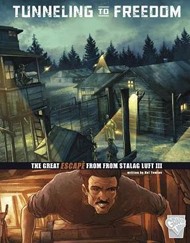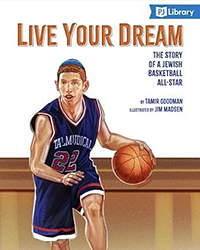This is a graphic novel adaptation of a memoir written by Joseph Joffo, a French Jew who describes his wartime experiences as a boy during the Holocaust. When Joseph’s parents sense that it is no longer safe to be in Paris due to the presence of Nazi soldiers, they give ten-year-old Joseph and his older brother, Maurice, enough money to leave, and instruct them how to find their brothers who have already made it to the Free Zone in France, primarily Menton and Nice. What follows is part adventure, part history lesson, as the boys and their family find the ways and means to survive the war (all but Joseph’s father who is ultimately captured and sent to a concentration camp). Their primary strategy is to deny their Jewish heritage. The most compelling part of the story is when Joseph’s father vigorously instructs him to say he is not a Jew, and Joseph responds “Papa?…What is a Jew?” This is not a typical Holocaust memoir.
While Joseph does encounter Nazis, faces dangers and has his identity questioned on more than one occasion, he and his brothers appear to be relatively safe in Vichy France. They even manage to be enrolled in school and finagle deals to get things they want. As the war winds down, there is a rather confus- ing shift in the story when the boys are sent to Aix-Les-Bains and Joseph experiences the tension between a family that supports the Vichy government and members of the French Resistance. While this is a short section, it requires knowledge of the collaboration between Vichy France and the Nazis, which is only explained in an endnote. An additional shortcoming of this adaptation is the frequent use of American colloquialisms (i.e. “Here! 20,000 smackers! Go ahead, count!”) which one assumes are used to make the text more appealing to the intended audience, but which don’t ring true in a memoir. As a graphic novel, the art plays a very significant role in the tell- ing of this story, and, for the most part, it does not disappoint. The panels are effectively done and advance the story well. The characters are varied and convincing. While not a perfect ad- aptation of Joffo’s memoir, this is a book that has the potential to give students a completely different view of what it meant to survive the Holocaust, as well as what it means to be a Jew. Recommended for ages 10 – 14.



